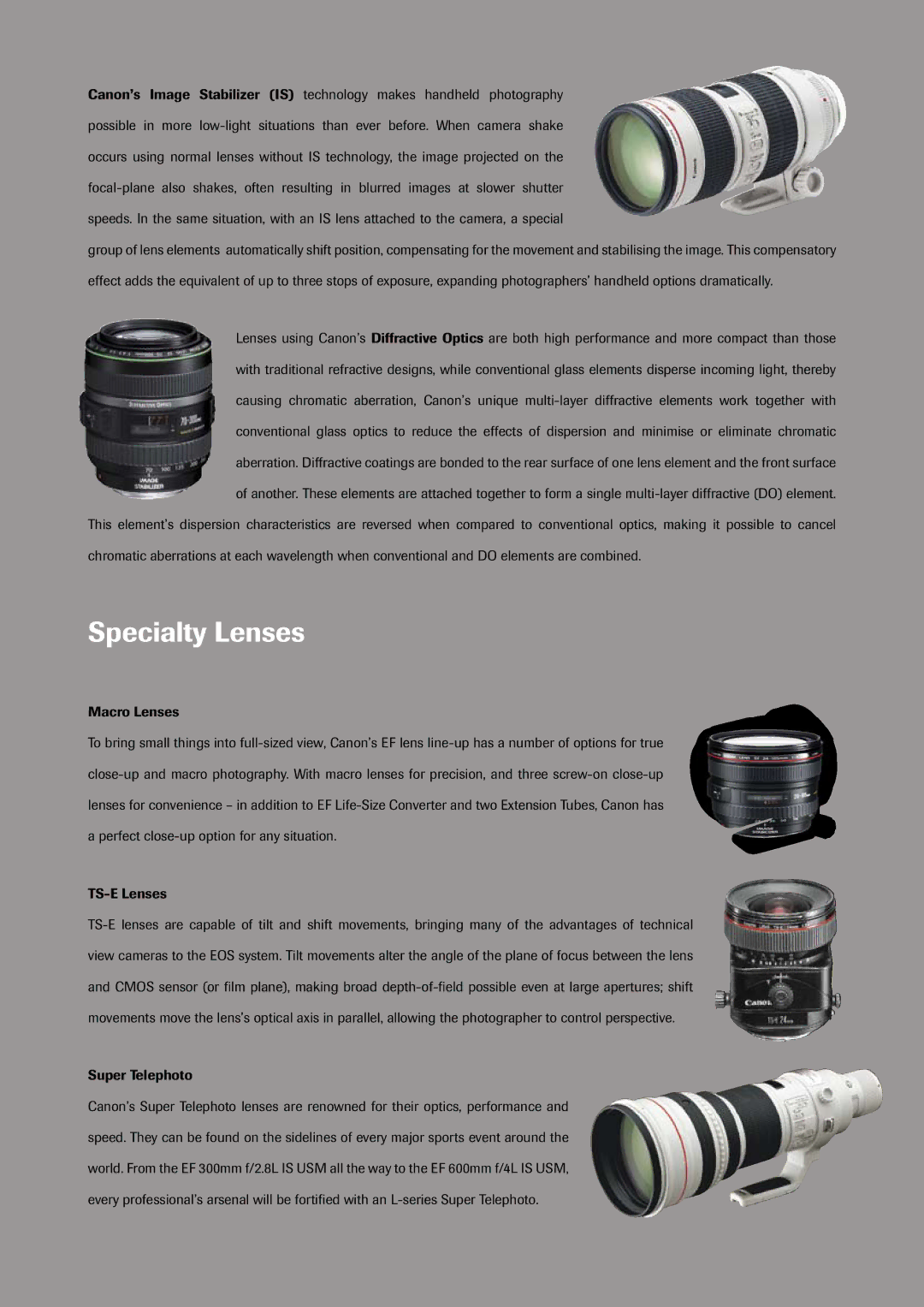Canon’s Image Stabilizer (IS) technology makes handheld photography possible in more low-light situations than ever before. When camera shake occurs using normal lenses without IS technology, the image projected on the focal-plane also shakes, often resulting in blurred images at slower shutter speeds. In the same situation, with an IS lens attached to the camera, a special
group of lens elements automatically shift position, compensating for the movement and stabilising the image. This compensatory effect adds the equivalent of up to three stops of exposure, expanding photographers’ handheld options dramatically.
Lenses using Canon’s Diffractive Optics are both high performance and more compact than those with traditional refractive designs, while conventional glass elements disperse incoming light, thereby causing chromatic aberration, Canon’s unique multi-layer diffractive elements work together with conventional glass optics to reduce the effects of dispersion and minimise or eliminate chromatic aberration. Diffractive coatings are bonded to the rear surface of one lens element and the front surface of another. These elements are attached together to form a single multi-layer diffractive (DO) element.
This element’s dispersion characteristics are reversed when compared to conventional optics, making it possible to cancel chromatic aberrations at each wavelength when conventional and DO elements are combined.
Specialty Lenses
Macro Lenses
To bring small things into full-sized view, Canon’s EF lens line-up has a number of options for true close-up and macro photography. With macro lenses for precision, and three screw-on close-up lenses for convenience – in addition to EF Life-Size Converter and two Extension Tubes, Canon has a perfect close-up option for any situation.
TS-E Lenses
TS-E lenses are capable of tilt and shift movements, bringing many of the advantages of technical view cameras to the EOS system. Tilt movements alter the angle of the plane of focus between the lens and CMOS sensor (or film plane), making broad depth-of-field possible even at large apertures; shift movements move the lens’s optical axis in parallel, allowing the photographer to control perspective.
Super Telephoto
Canon’s Super Telephoto lenses are renowned for their optics, performance and speed. They can be found on the sidelines of every major sports event around the world. From the EF 300mm f/2.8L IS USM all the way to the EF 600mm f/4L IS USM, every professional’s arsenal will be fortified with an L-series Super Telephoto.

